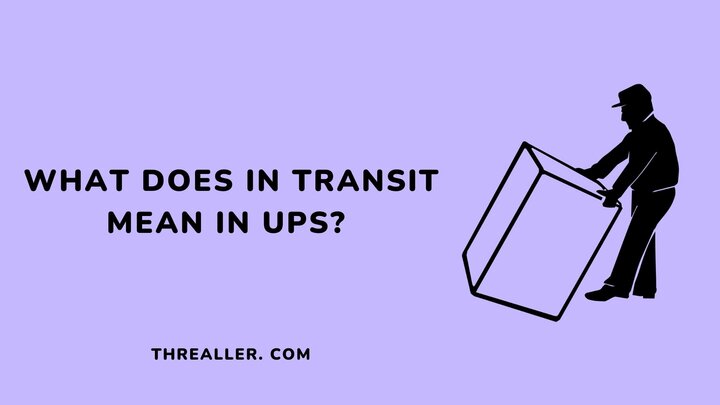There are multiple ways to describe the “In Transit” notification. Nevertheless, what matters most is that such an order is progressing. In other words, your package can move from one UPS distribution center to the next, undergo scanning, and remain “in transit.”
How long your shipment will remain in transit depends on where the shipment is coming from and your choice of UPS shipping option. While most “In Transit” notifications last only 24 hours in UPS, some scenarios can extend your waiting time.
This guide explains what “in transit” means, how long it takes, factors that can keep your package in such a condition, and what comes after.
What Does “In Transit” Mean in UPS?
“In Transit” in UPS means your item is progressing within the UPS Network and will soon be out for delivery. If you track it occasionally, a package can remain “In Transit” until delivery.
This occurs when the transition from “In Transit” to actual delivery only takes a few hours.
How Long Should a UPS Package Be “In Transit”?

The “In Transit” notification should not last more than 24 hours. When a UPS package is in transit, the status should change within a day or less to indicate progress.
This may not be the case for packages traveling a long distance or internationally because they have to move through more UPS locations. Your choice of UPS shipping service may also affect how long the notification persists.
Irrespective of these factors, no UPS package should remain in transit for more than four days. If this happens, there is a likelihood that your package has been lost or damaged.
Contact the UPS customer service in charge of your domestic or international package.
Why Your UPS Package May be Stuck in Transit
Your package may be stuck in transit if there is a:
1. Customs delay
This is very common for international shipments. If the port is congested or your package lacks the necessary documents, there will be a delay. Otherwise, your package should only undergo the necessary routine inspection.
2. Bad or adverse weather
Bad or adverse weather conditions such as tornadoes or hails can also delay the delivery of weather-sensitive parcels. It also puts the carrier and his vehicle at risk.
3. Gridlock or traffic congestion
Gridlocks are inevitable and unpredictable. When they occur, they delay delivery. In other words, if you have a delivery scheduled for 4 p.m., such a package may not arrive until 6 p.m. or the next day.
4. Festive seasons
Christmas and other yuletide seasons typically welcome an influx of orders. Therefore, if you are expecting a package during these periods, it is always nice to brace up for a bit of delay. This is because millions of people are also sending packages to various locations.
5. Failed delivery attempts
When a delivery personnel arrives at your residence, and you cannot receive the package, such an order will maintain the “In Transit” status.
On the bright side, another attempt will likely occur the next day, and you can be present or have a neighbor receive the package on your behalf.
What Comes After “In Transit” At UPS?
You will likely see the “In Transit” notification more than other notifications during a UPS delivery process. However, this status eventually changes to “Out for Delivery” once the package arrives at the final UPS facility.
This means it is ready for delivery at the recipient’s address. How long this takes may vary from 24 hours to 4 days. But the notification tells you the estimated date and time to expect your package.
FAQs
How can you track a UPS package?
To track your package, go to the UPS tracking portal on the website and enter your tracking ID. Click the “Track” button to get a real-time update on the status of your package.
Does UPS deliver on Sunday?
Sunday delivery only occurs via UPS Express Critical. This value-added service can be delivered as late as 8 p.m. on Sunday.
Can you pick up a package from UPS before delivery?
You can tell a UPS Access Point to hold onto your package until you can pick it up.
Wrapping Up
UPS “In Transit” notification means your package moves from one UPS facility to another. How long the status feature on your order depends on your choice of shipping and the type of package (domestic or international).
Domestic shipments via UPS usually arrive faster than International shipments. This is because the latter travels a longer distance and requires in-depth inspection.
Once an order successfully navigates the “in transit” period, it should be “out for delivery.” Regardless of the type of shipment, no UPS delivery should exceed seven business days.
Also, feel free to contact UPS customer service if any order status or notification seems to be taking longer than expected.
I hope you found this guide helpful. If you did, see what a UPS Exception to learn how it affects packages in transit is.
Thanks for reading.

